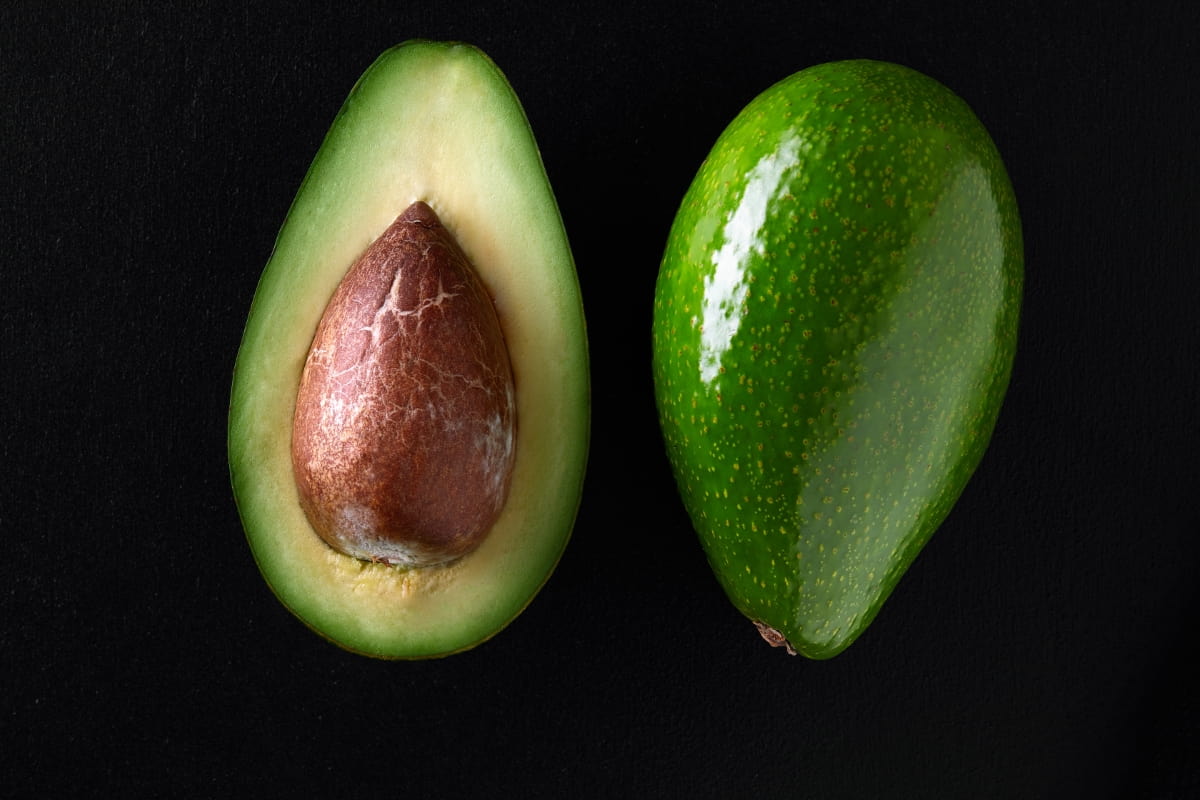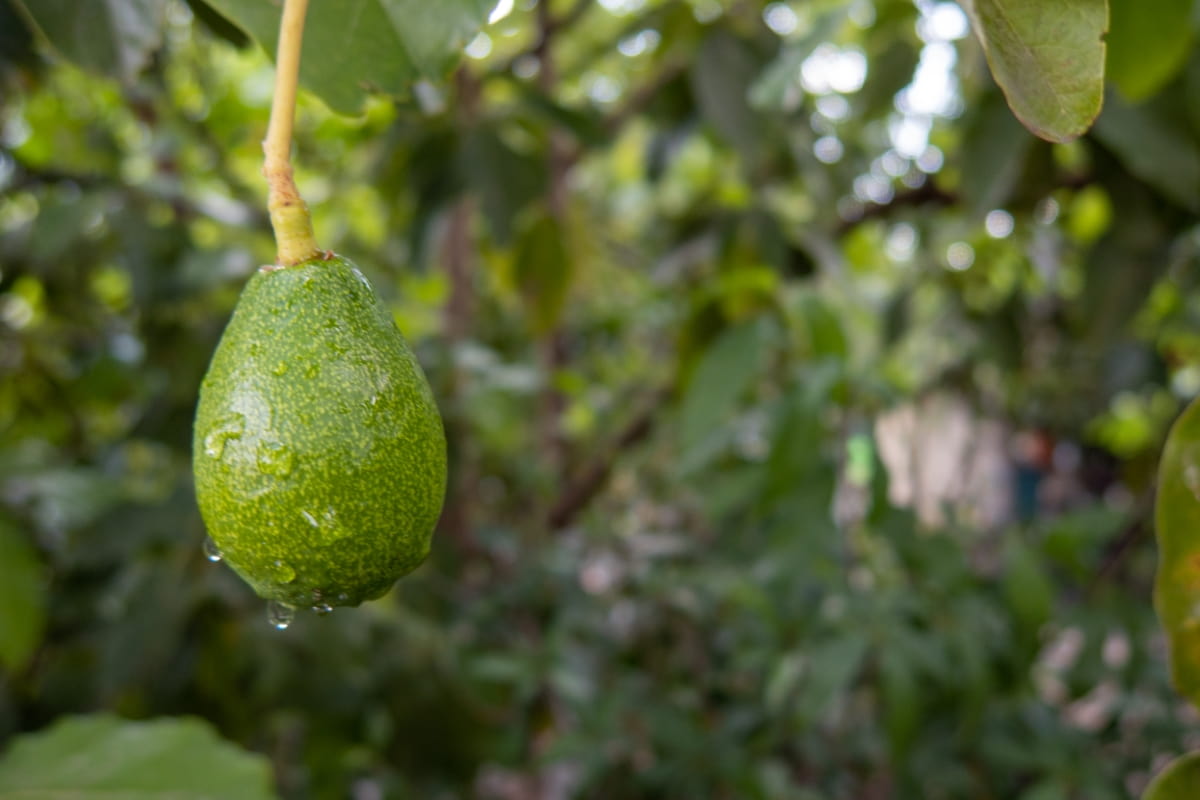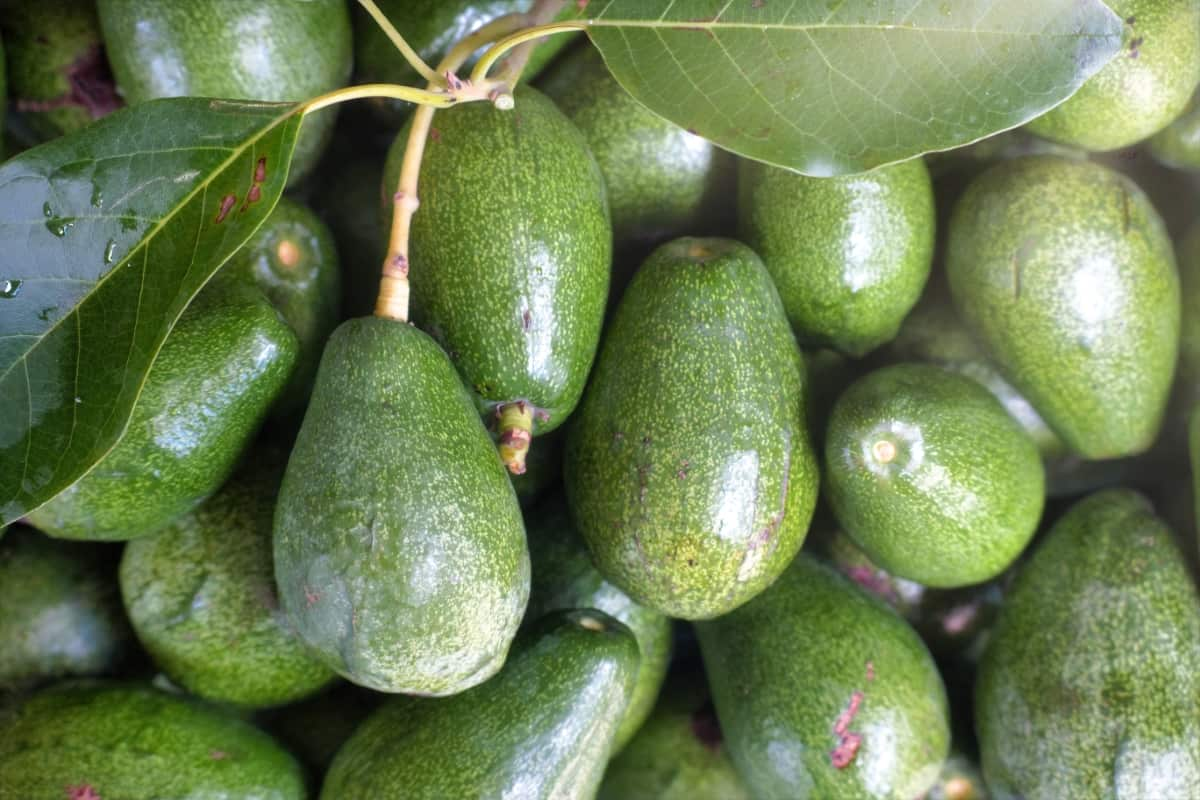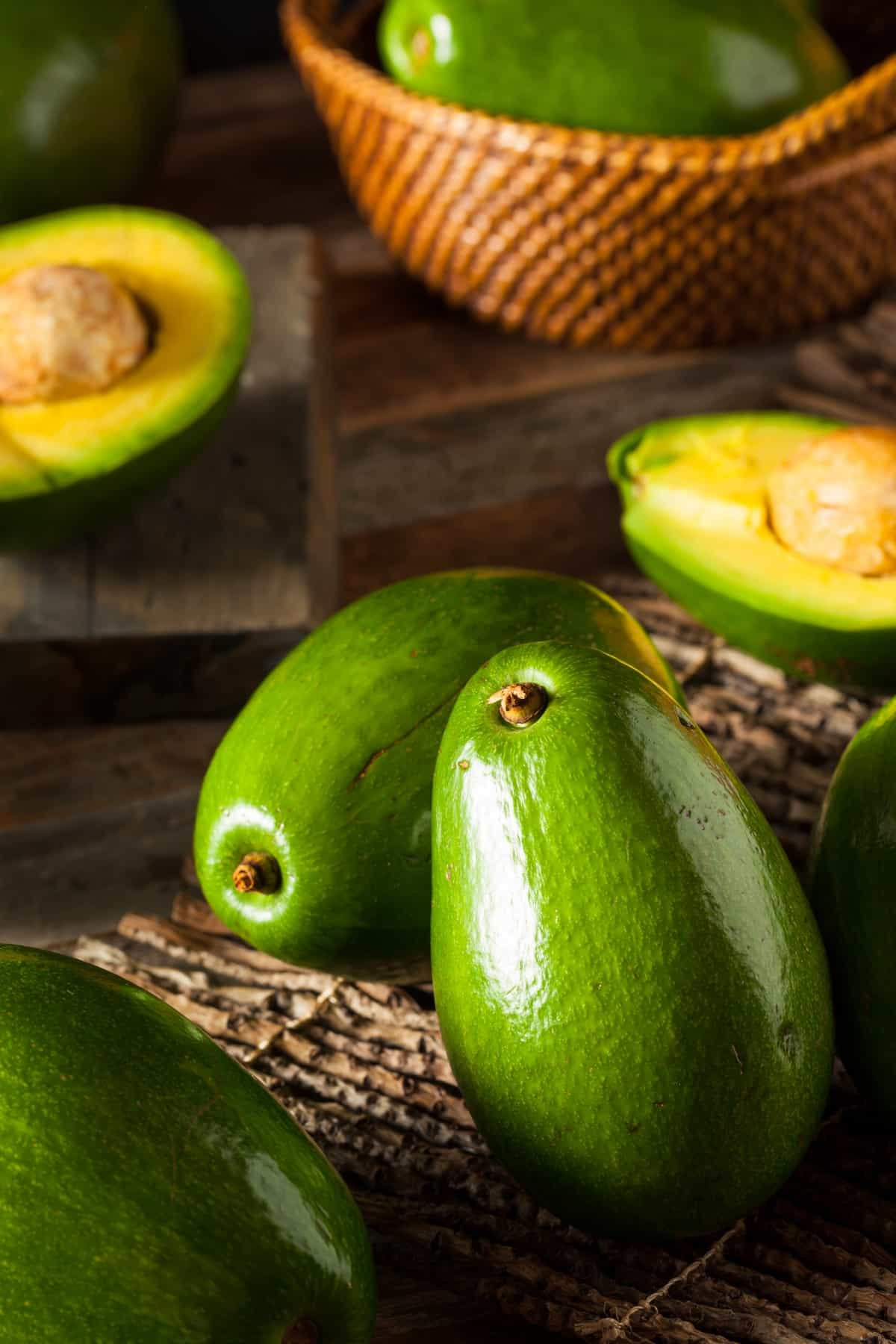Bacon avocado trees, originating in California in the early 20th century, are a hybrid variety prized for their rich, buttery flavor and smooth texture. These trees, a cross between the Fuerte and Hass avocado varieties, offer a distinct taste profile and resilience to harsh climates. Known for their medium-sized, pear-shaped fruits with dark green, pebbly skin, Bacon avocados stand out for their mild, nutty taste and creamy consistency. Here’s everything you need to know about growing Bacon avocados.

Facts About Bacon Avocado
Bacon Avocado Varieties to Grow in your Farm
- Hass: One of the most widely grown Bacon avocado varieties worldwide, Hass is known for its creamy texture with nutty flavor and pebbled skin that turns purplish-black when ripe.
- Gwen: This cultivar produces medium-sized fruits with smooth, green skin and a rich, buttery taste. It’s valued for its high oil content and resistance to root rot.
- Lamb Hass: A hybrid of Hass and Gwen, Lamb Hass offers a similar taste profile to Hass but with a slightly larger fruit size and a longer harvesting window.
- Zutano: Zutano avocados are pear-shaped with a glossy, green skin and a mild flavor. They are known for their early ripening and frost tolerance, making them suitable for cooler climates.
- Pinkerton: This cultivar produces elongated fruits with a thin, green skin and a rich, creamy texture. It’s favored for its high yields and resistance to sunburn.
- Reed: Reed avocados are large, round fruits with smooth, green skin and a creamy texture. They have a mild, buttery flavor and a long harvesting window, making them ideal for home growers.
- Fuerte: Known for its pear-shaped fruits and smooth, thin skin, Fuerte avocados have a delicate, nutty flavor. They are cold-hardy and well-suited for coastal regions.
Understanding the Growth Cycle of Bacon Avocado Trees: From Seed to Fruit
For growing Bacon Avocado, starting with a mature avocado seed, it germinates in moist soil within 2-6 weeks. The seedling emerges, developing into a small tree with regular watering and sunlight. Over the next 2-3 years, the tree establishes a sturdy root system and grows vigorously, reaching a height of 10-20 feet. Flowering typically begins in the third or fourth year, with small clusters of pale green flowers appearing on the branches.
Pollination, often aided by bees, results in the development of small fruits. These fruits mature over several months, changing from green to a purplish-black hue when ripe. Around 7-10 years from germination, the tree reaches full maturity, producing abundant yields of medium-sized, buttery-textured bacon avocados, ready for harvest in late winter to early spring. The bacon avocado tree growth cycle from seed to fruit usually spans about 8 to 10 years.
The Nutritional Profile of Bacon Avocados: Health Benefits and Dietary Information
They abundantly have heart-healthy monounsaturated fats, fiber, and essential vitamins like vitamin E, vitamin K, and folate. These Bacon avocado health benefits include improved cardiovascular health, digestion, and immune function. Also, the avocado’s low sugar content makes it suitable for individuals managing blood sugar levels.
Incorporating bacon avocados into a balanced diet may support weight management and overall well-being. However, moderation is vital due to their calorie density. Enjoying them in salads, sandwiches, or as a flavorful topping can enhance both taste and nutrition.
Pest and Disease Management in Bacon Avocado Trees: Prevention and Solutions
Regular inspection of trees for signs of pests like aphids, thrips, scales, and mites, as well as diseases such as root rot and anthracnose, is crucial. Implementing cultural practices like proper irrigation, ensuring good drainage, and maintaining soil health can help prevent many issues. Natural predators like ladybugs can be introduced to control aphids and other pests.
In case you missed it: How to Increase Avocado Fruit Size: Optimization for Large Avocado Fruit Growth

Horticultural oils, Neem oils, or insecticidal soaps can be used for pest control in bacon avocado. Pruning to improve air circulation and remove infected plant parts is also essential. Additionally, choosing disease-resistant avocado varieties for planting can further mitigate disease management bacon avocado. Regular inspecting and prompt action are key to maintaining healthy Bacon avocado trees.
Pruning and Maintenance Tips for Healthy Bacon Avocado Trees
Pruning bacon avocado trees is best done in late winter or early spring before new growth emerges. Aim to prune annually, focusing on removing dead, diseased, or crossing branches to maintain airflow and sunlight penetration. Additionally, thin out crowded areas to encourage better fruit production and overall tree health. Avoid pruning Bacon avocado trees heavily during the growth season to minimize stress on the tree.
Harvesting Bacon Avocados: Optimal Timing and Techniques
For Bacon avocado harvesting, wait until they reach maturity, typically from late fall to early spring. Test ripeness by gently squeezing; ripe avocado yields slightly to pressure. To pick, twist the fruit off the stem or use pruning shears. Ensure a clean cut to avoid damaging the tree. Harvest during dry weather to prevent rotting and handle with Bacon avocado tree care to avoid bruising. Store harvested avocados at room temperature until ripe, then refrigerate to slow ripening.
Culinary Uses of Bacon Avocados: Recipes and Preparation Ideas
For a simple yet delicious snack, try slicing the avocado and sprinkling it with sea salt and black pepper. Incorporate diced bacon avocado into salads for added creaminess and flavor. For a hearty breakfast, spread mashed bacon avocado on toast and top with poached eggs.
Create a refreshing bacon avocado salsa by combining diced avocado, tomatoes, onions, cilantro, lime juice, and jalapeños. For a twist on traditional guacamole, mash bacon avocado with garlic, lime juice, salt, and diced tomatoes. Whether in salads, dips, or as a standalone snack, bacon avocados add a unique richness to any dish.
Climate Adaptability of Bacon Avocado Trees: Where They Thrive Best
These trees thrive best in regions with a Mediterranean or subtropical climate characterized by mild, wet winters and hot, dry summers. They are particularly well-suited for USDA hardiness zones 9b to 11. Ideal temperature ranges for growth typically fall between 15 to 40°C, although they can tolerate occasional frosts down to -4°C for short durations. In terms of soil, bacon avocado trees prefer well-draining, sandy loam soils with a slightly acidic to neutral pH level.
In case you missed it: How to Prevent Avocado Fruit Rot Naturally: Best Ways to Control with Natural and Organic Treatment

These trees also require adequate sunlight, preferably in full sun to partial shade, to facilitate healthy growth and fruit production. Prime locations for bacon avocado cultivation include parts of California, particularly coastal areas like San Diego and Santa Barbara counties, where the climate closely mirrors their preferred conditions. Additionally, regions with similar climates around the world, such as parts of Australia, New Zealand, and the Mediterranean basin, also offer suitable environments for successful bacon avocado cultivation.
The Economic Aspect of Growing Bacon Avocado Trees: Market Trends and Opportunities
Bacon avocado trees present promising economic prospects in alignment with the growing demand for avocados worldwide. With increasing awareness of health benefits, sustainable cultivation practices, and culinary diversity, there’s a steady rise in demand, especially in upscale markets and restaurants.
Opportunities abound for growers to capitalize on this trend by leveraging niche markets, direct sales channels, and value-added products. Additionally, the resilience of avocado trees to various climates enhances their appeal, fostering potential for sustainable growth and profitability in the industry.
In case you missed it: Avocado Seed Growing Stages: Avocado Seed Growth Time Lapse

Conclusion
Overall, Bacon avocado trees are relatively easy to cultivate and produce delicious fruit with versatile culinary uses. Whether you’re enjoying them fresh or incorporating them into various dishes, Bacon avocados are sure to delight your taste buds.
- Feed Your Flock for Less: Top 10 Tips to Save on Chicken Feed
- Ultimate Guide to Ossabaw Island Hog: Breeding, Raising, Diet, and Care
- Hatching Answers: The Top 10 Reasons Your Chickens Aren’t Laying Eggs
- Eggs and Economics: Breaking Down the Cost of Raising Backyard Chickens
- Defend Your Greens: Proven Methods to Keep Iguanas Out of Your Garden
- Ultimate Guide to Cinnamon Queen Chicken: A Comprehensive Guide for Beginners
- Ultimate Guide to California Tan Chicken: Breeding, Raising, Diet, Egg-Production and Care
- Ultimate Guide to Marsh Daisy Chicken: Breeding, Raising, Diet, and Care
- 10 Types of Chicken Farming Businesses You Can Start for Profits